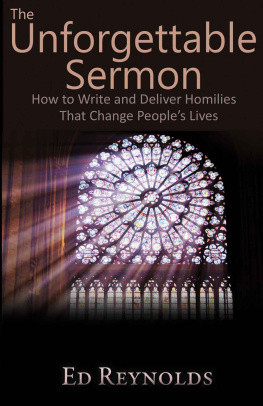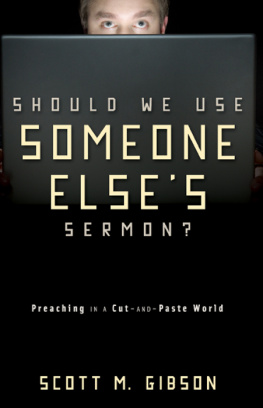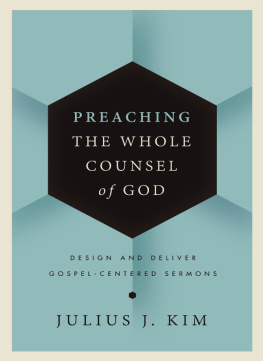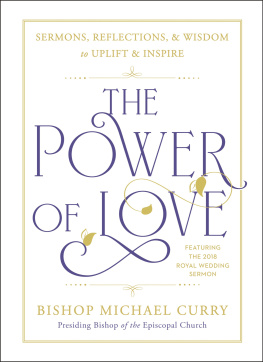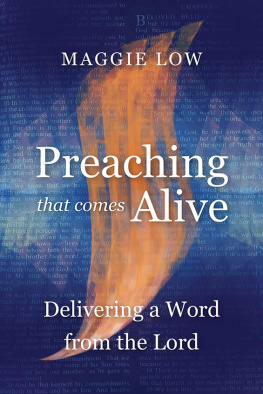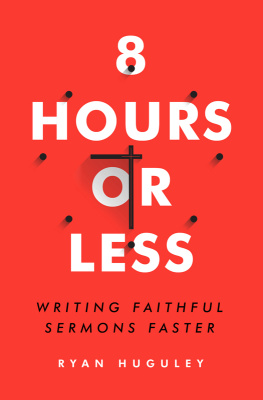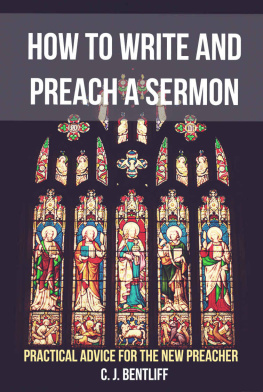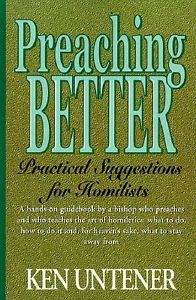

Copyright 2013 by Edward Reynolds
All rights reserved. Any reproduction, sale or commercial use of this book without authorization is strictly prohibited.
Revised Standard Version of the Bible, copyright 1952 (2nd edition, 1971) by the Division of Christian Education of the National Council of the Churches of Christ in the United States of America. Used by permission. All rights reserved.
ISBN: 978-0-692-01914-6
Cover photo detail: Rose window in Notre-Dame de Paris Shutterstock / P.Burghardt
Cover & Interior Design by Scribe Freelance ! www.scribefreelance.com
Published in the United States of America
Contents
PART ONE PART TWO PART THREE PART FOUR CONCLUSION
The secret of a good sermon is to have a good beginning and a good ending, then having the two as close together as possible.
George Burns
Preface
M y father was born in the Bronx , New York City, and when it was time for him to learn to swim, his friends took him to the East River. They walked him to the end of a pier and threw him in. It was the Sink or Swim school of swimming.
Looking back to my seminary days, I remember my four years of homiletics as a Sink or Swim school of preaching. A topic and date were assigned to me and I was then on my own. Feedback came from my classmates who were careful not to bruise my feelings. In the parish, feedback was the occasional Thank you for your sermon which was a message in itself. I wasnt very good, sometimes even awful, and didnt know what I had to do to become a good preacher.
Since then, I have taught courses in public speaking, communications, and writing and have sat in the pews for forty years in many different parishes. During those years, I have watched and listened to preachers who I knew were faith filled and dedicated. Some delivered excellent sermons, some mediocre, and some delivered dull and lifeless efforts. All of them wanted to preach well, had prayerfully read the scriptures, and prepared their sermons. Why then did some succeed and others fail?
The answer, I believe, is that in addition to the scriptural and spiritual content of a sermon, a preacher must also learn the techniques and skills of writing and delivering a sermon. These techniques and skills have been well documented in books on writing and public speaking. I have adapted them to fit your needs as a preacher and have added a few more from my own journey. This is a how to book about what you need to know to write and deliver sermons and about the catalysts that will lift your sermons to life-changing experiences. By mastering them and making them your own, you can become an inspiring preacher.
Introduction
The Unforgettable Sermon
Ive learned that people will forget what you said, people will forget what you did, but people will never forget how you made them feel.
Maya Angelou
I f you preach or hope to preach , I suggest you copy Angelous sentence and tape it on the wall over the desk where you write your sermons. It will remind you of what you must do to create unforgettable sermons.
Angelous insight reminds us of an obvious but often neglected truth: The people who listen to preaching are a mix of intellect and emotion, understanding and feeling. Accepting that truth is easy; using it to create life-changing sermons is not. Experience has shown that some sermons are dynamic and engaging while others are dull and lifeless. That is true, I believe, because some sermons engage the whole person, intellect and feelings, while others are lectures, devoid of passion and feeling. They speak only to the intellect. A sermon that appeals only to the intellect and not to the heart is half a sermon and is doomed to fail.
One sees clearly only with the heart. Anything essential is invisible to the eye.
Antoine de Saint-Exupery
If Maya Angelou and Antoine de Saint-Exupery have not convinced you of the importance of touching peoples hearts, here is the advice of Pope Francis in an interview published in America magazine, September 30, 2013:
the thing the church needs most today is the ability to heal wounds and to warm the hearts of the faithful
A successful sermon which engages the whole person, intellect and feeling, creates an experience which the preacher and listeners share.
If you want to create shared experiences in your preaching, you can learn how. However, you must first learn the crafts of writing and delivering sermons. Good preaching, like good public speaking, is the product of knowledge and skills that can be learned. A good preacher has learned the techniques needed to design sermons, owns the tools and construction materials needed to build them, and has mastered the public-speaking skills needed to deliver them at a professional level. This book will describe those techniques, tools, and skills, and will give you suggestions on how you can make them your own.
In , Conducting Retreats and Days of Recollection , I will give some recommendations for retreat masters.
Homily or Sermon?
Some churches use the word homily to describe preaching during their liturgies while some churches use the word sermon to describe their preaching. I will use homily only in those instances where it is related to liturgical preaching. Otherwise I will use sermon.
Scripture and Prayer
I assume we agree that all preaching begins with a reading of scripture and with prayer. Others have developed these subjects better than anything I can add so please include this understanding as you read further. Also, since the sole purpose of this book is to help you with the writing and delivering of your sermons, I will not address the content of your preaching.
Part One
Building the Sermon
W hen we stand in front of a beautiful painting , we forget that the artist first drew a cartoon, a sketch, of his first visualization of the picture. As he began to fill in the lines, he became covered with paint and sometimes his own sweat. Painting his work of art was a messy, sometimes dirty, process. So it is with crafting a good sermon. It is usually a messy experience and not pretty at the cartoon stage. Still, with hard work, your sermon, like a work of art, can touch peoples hearts. is about the messy craft of building the sermon. So roll up your sleeves and lets get to work.
Chapter 1
Some Basic Facts of Life for a Preacher
Preparation
It usually takes me three weeks to prepare an impromptu speech.
Mark Twain
N o one delivers a good impromptu speech . When a speaker rises to respond to a call for a few words and then knocks it out of the park, you can be sure hes given this before or been rolling it around in his mind for hours, maybe days. Good sermons are the products of careful preparation.
Before you begin to put word to paper or computer, you must first admit to yourself that, like an apprentice carpenter, you must first learn the basics of your craft. Both writing and preaching a sermon are crafts. Unlike art which depends upon abilities unique to the artist, a craft can be learned by anyone willing to work at it and learn.
The Craft of Writing a Sermon
Every man must learn his trade not pick it up. God requires that he learn it by slow and painful processes. The apprentice-hand in blacksmithing, in medicine, in literature, in everything, is a thing that cant be hidden. It always shows.
Mark Twain
Twain calls the craft of writing a trade. In that trade (craft), the preacher is like a carpenter. Before building a table, a carpenter must first learn about the different kinds of wood, their characteristics, how to cut and join them, and how to design a strong, beautiful table. Only then can the construction begin. A good carpenter is a good craftsman.
Next page
